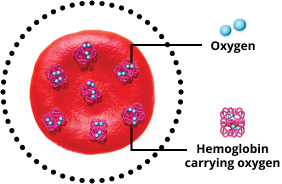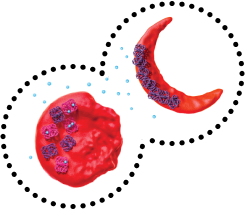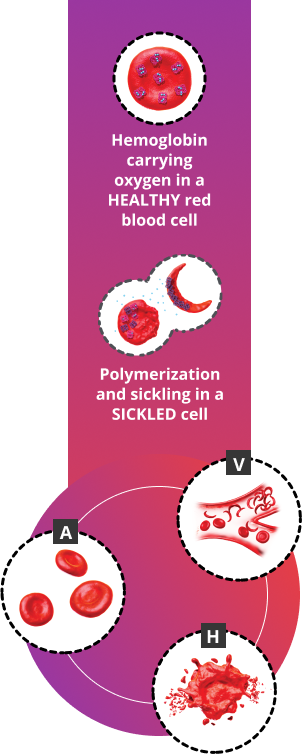WHY DO
CELLS SICKLE?
ABRAHAM
Soccer fan, nurse, and actual Oxbryta patient
SICKLE CELL DISEASE IS CAUSED BY A SICKLE GENE THAT IS INHERITED FROM BOTH PARENTS

HEALTHY RED BLOOD CELLS are flexible, can change shape easily, and can travel through blood vessels of any size.

HEMOGLOBIN is a special protein inside red blood cells that helps carry oxygen throughout the body.

POLYMERIZATION AND SICKLING occur when oxygen is
released from abnormal
hemoglobin, causing it to clump
together
(polymerize)
Polymerization [po-ly-mer-i-za-tion] happens when the
hemoglobin inside of red blood cells releases oxygen and clumps together to form long, stiff
chains.
Polymerization causes sickling and can lead to a range of conditions from fatigue
to
pain
crises.
to form
long, stiff chains and make red
blood cells change into a sickle,
or banana shape.
WHAT SICKLING CAN TRIGGER
Polymerization, which causes sickling, can lead to serious consequences in the body.

NEMIA:
When red blood cells break down, the body does not have the amount of healthy red blood cells that it needs. This is called anemia, and this type of anemia could result in the body not having enough oxygen.
EMOLYSIS:
Hemolysis is when red blood cells break down. This can be caused by a variety of factors, including polymerization and sickling.
ASO-OCCLUSIONS/PAIN CRISES:
Sickled cells can block blood flow. When a blood vessel is partially or completely blocked, a pain crisis may occur.
Please note all signs and symptoms that you experience and inform your healthcare professional.
A CLOSER LOOK
Take a look inside the red blood cell to learn more about why cells sickle and the impact sickling can have on the body.
"My sickle cell is more than pain."
– MUYIWA
Actual Oxbryta patient
Actual Oxbryta patient
SICKLE CELL IS A 365-DAY-A-YEAR CONDITION
When many people think about sickle cell, they only think about the painful crises that can put those living with sickle cell in the hospital. Many don't realize that sickle cell is more than that.
Sickle cell is a 365-day-a-year condition. That can mean living with day-to-day fatigue, yellow eyes from jaundice, and shortness of breath—all things you can easily feel and see.
But in addition, damage from sickle cell is always happening even if you don’t have pain crises or feel sick at all. Even when you feel fine, sickle cell may be causing damage. This damage can mean harm for many parts of your body.
WHAT CAN I DO TO BETTER MANAGE MY CONDITION?
Labs and screenings help you and your healthcare provider to proactively manage your sickle cell.
They can show if you are becoming anemic, if your blood cells are making too few red blood cells, if the red blood cells are breaking down too quickly, or if there are any other changes happening in your body.
There are some basics that can help you manage your sickle cell successfully. Be sure to see your healthcare provider regularly and establish an open dialogue so you can get the care you need.
Actual Oxbryta patient
Knowing your numbers is important
Your healthcare provider may check your lab reports for the following levels:
- Hemoglobin
- Red blood cells
- Reticulocytes
- Bilirubin


